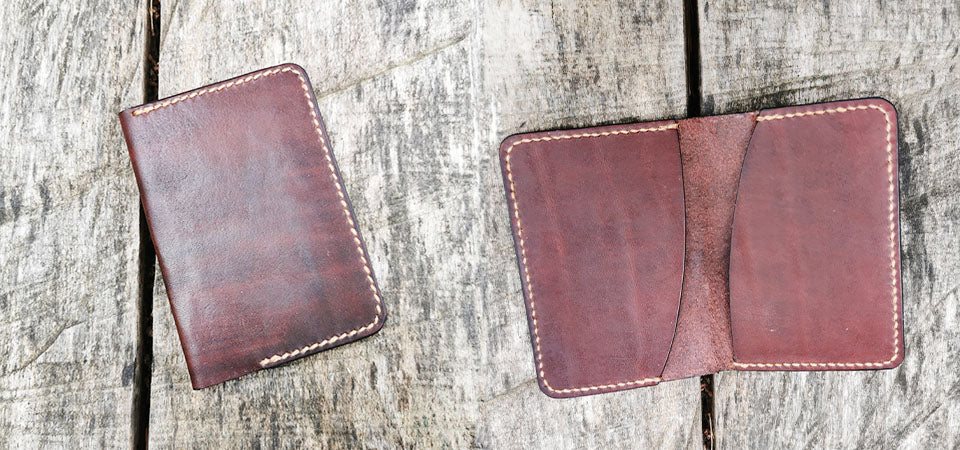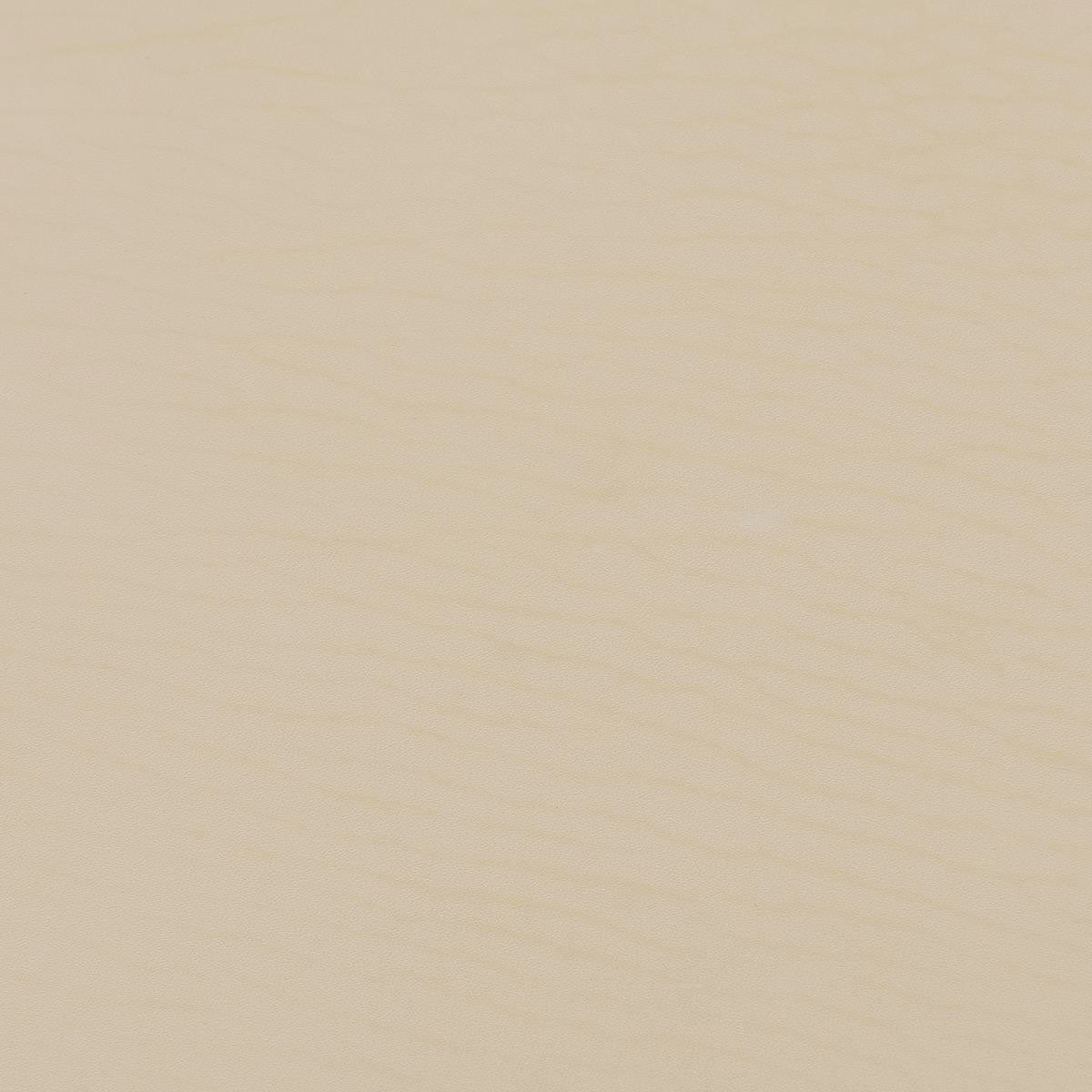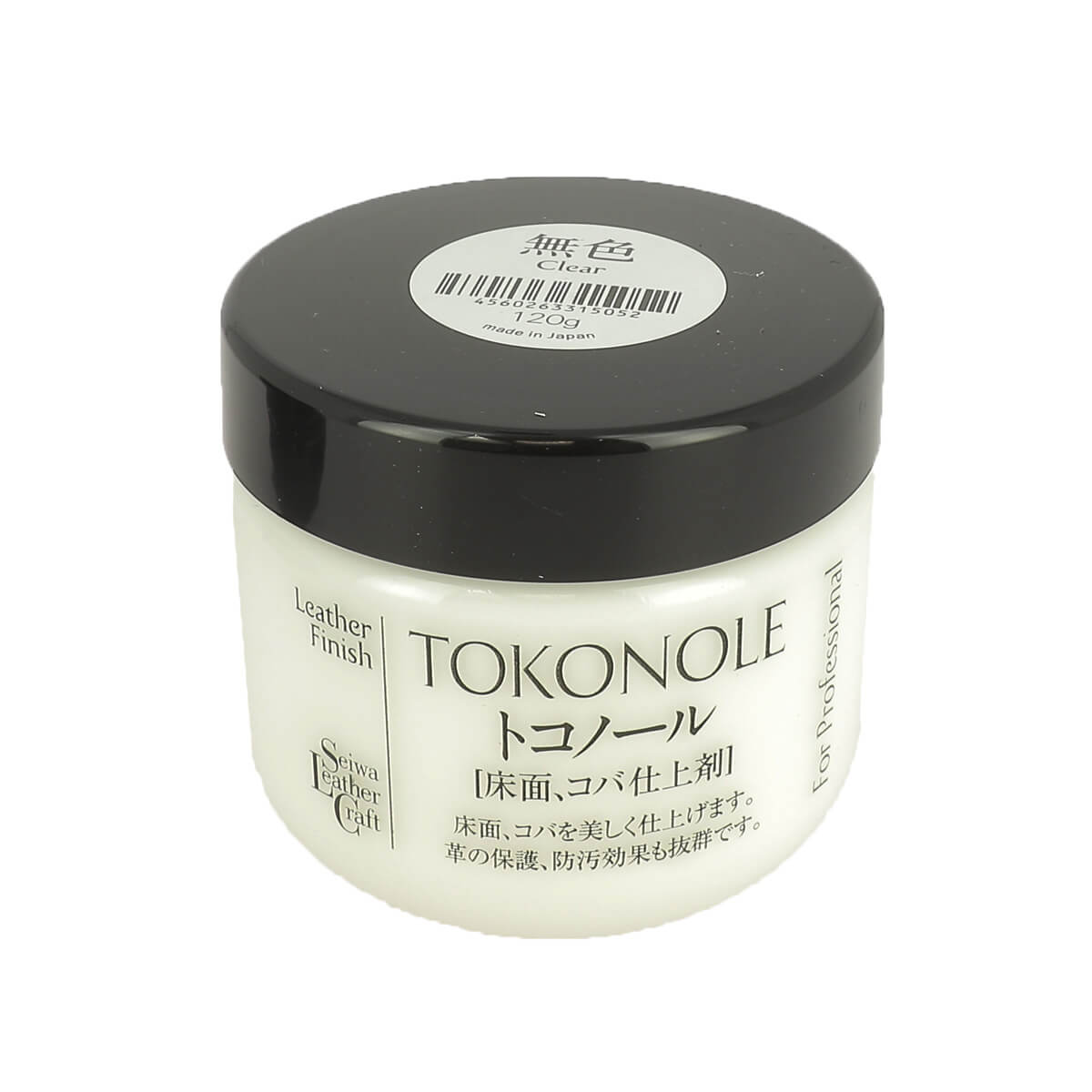THE NECESSARY EQUIPMENT
To complete this tutorial, you need:
- Natural vegetable tanned cowhide leather - 20 x 30 cm - Thickness 1.4 mm
- 250 ml pot of water-based contact adhesive with brush integrated into the cap
- Oil Dye - FIEBING'S Professionnal OIL DYE / PRO DYE - MAHOGANY - MAHOGANY
- Carton of 8m of waxed linen thread MeiSi super fine M50 - 0.55 mm
- Tokonole - Leather Finishing Eraser - 120 g - Neutral
- Neatsfoot oil to rehydrate, nourish and soften leather
And the following tools:
- Dual function tree frog
- Set of 3 Deco Leather precision impact claws n°8 - Center distance 3.38 mm
- A folding saddler's pliers for sewing leather
- A wooden strip
1. PRINT AND CUT THE PATTERN
Print and cut out the pattern. You can put it on a rigid support like cardboard but if you are careful, it will not be necessary. 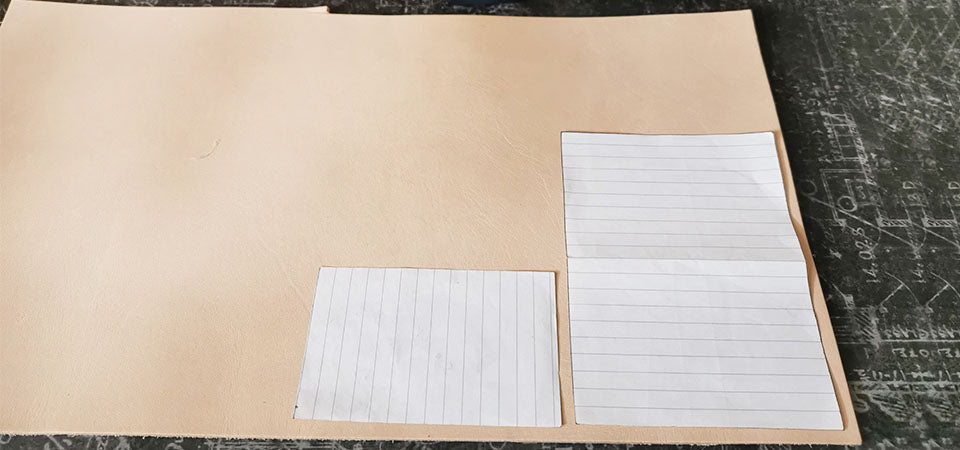
2. TINTING THE LEATHER
Dye the leather before transferring the pattern: this avoids a small deformation of the leather due to the application of the dye.
You can also maintain your leather at this stage, Aurélien has applied neatsfoot oil to nourish and soften the leather. 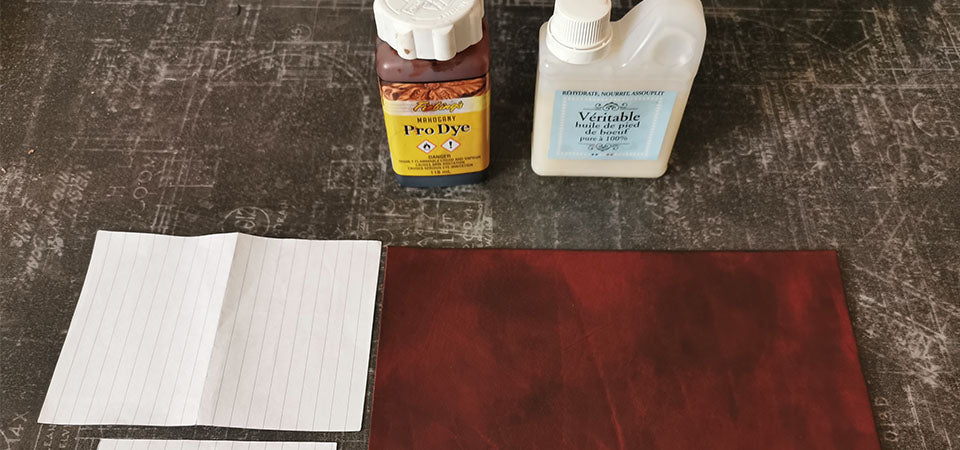
3. MARK THE CUTTING TRACES ON THE LEATHER
Using a silver pencil or plotter and the cut pattern: mark the cutting lines and the holes on the leather.
4. CUT THE TEMPLATES FROM THE LEATHER
Cut the leather with a cutter or knife: try to be as regular and precise as possible. Aurélien opted for a round cut and used drawing guns. 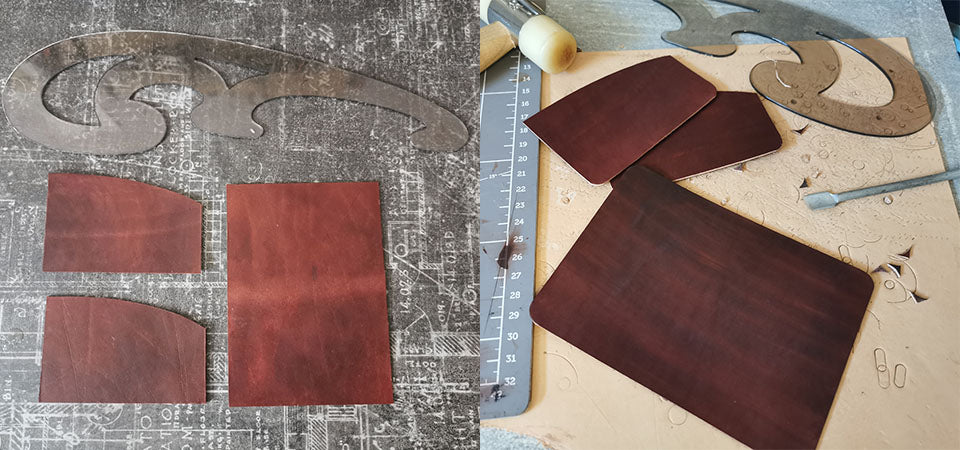
5. WORK THE SLICES
Before gluing, work the edges with a finishing gum and/or dye as well as with an edge trimmer. In particular the parts which will be difficult to access after gluing.
Here we are working on the "interior" edges of the leather pieces. Aurélien also applied a layer of finishing gum on the split side of the leather to give it this appearance.
GUIDE: USING A FINISHING ERASER >

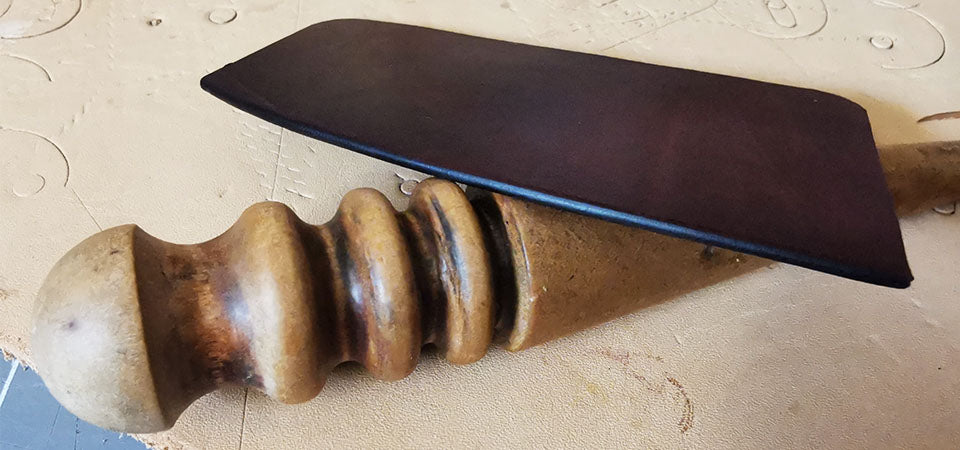
6. GLUE THE DIFFERENT PIECES
To glue the different pieces of leather, Aurélien chose a water-based leather glue (aqueous base). Remember to let the glue dry as indicated on the container! 
7. PREPARE TO SEW
Trace the seam line with a tree frog (or compass and shaper) then mark the leather with a claw. The leather not being thick, Aurélien did not pierce the stitches with an awl. 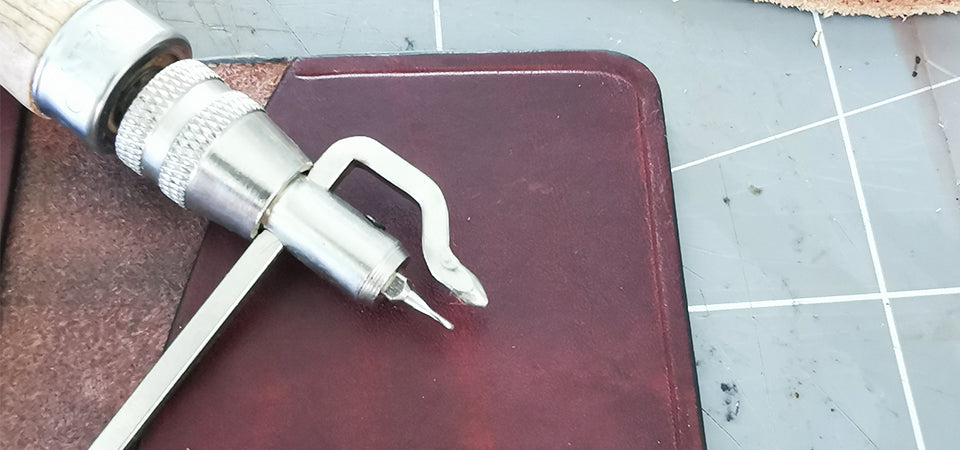
8. SEW AND FINISH WORKING THE SLOTS
Saddler stitch seam with waxed linen thread from the card holder. To learn more about saddle stitch sewing, see our guide:
SEWING GUIDE >
After sewing finish the work of the slices (see step 5). 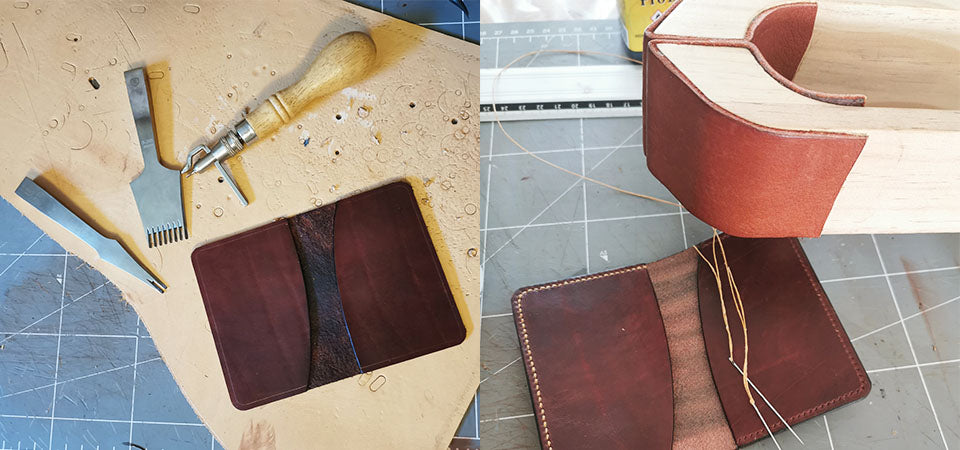
YOUR CREATION IS COMPLETE!
